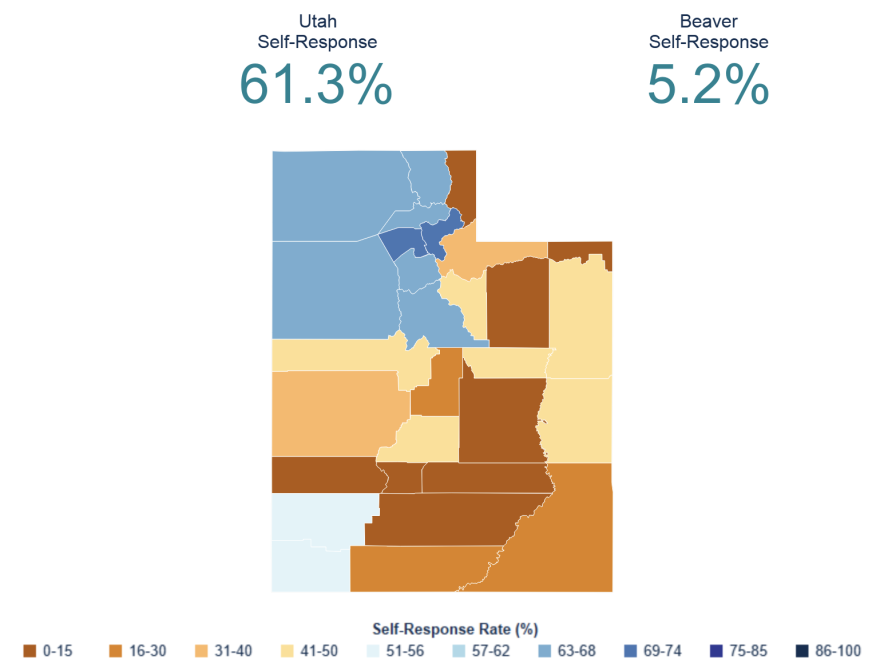The Census Bureau will resume counting homes across Utah in person this month, after pausing field operations in mid-March due to COVID-19. The Bureau originally planned to restart the count in June, but it deemed Utah one of 13 states where it’s safe to begin early.
“The decision was really based on factual information about the number of cases and how the trend is going in the various states where we started,” said Dennis Johnson, deputy regional director with the Census Bureau.
Most people in the state received a postcard in the mail this spring asking them to fill out the 2020 Census with a unique code that corresponds to their home address. But around 8% of households in the state don’t get mail delivered at home. Those 88,600 homes are mostly in rural areas and are supposed to receive a physical census questionnaire with their code. But only 17% of them went out in March.

Starting the count again earlier than planned should benefit rural communities in Utah, Johnson said, which have some of the lowest response rates in the state. As of now, 61.3% of households in Utah have completed the census, compared to 56.8% nationwide. But response rates in the state’s five least populous counties are all still at or below 10%. Those should go up when the field operation resumes this month.
Low Risk Visits
Delivering packets should not put workers at risk, Johnson said, since it does not require any physical contact. And residents should be safe, since they can respond online, by phone, or by mailing the packet back in a pre-paid envelope. Interpreters are on hand to help people who don’t speak or read English fill out their Census over the phone, Johnson said, adding that the Bureau will work with tribal governments to find interpreters for Native language-speakers.
“Our workers don’t need to speak to anyone,” he said. “They’ll be dropping off questionnaires at each residence and updating the address list. And if there’s a new structure, they’ll just add it in, leave a packet, and move on.”
Staffing won’t be an issue either, according to Johnson, who said most of the workers who started in March are excited to resume the operation.
“We may have lost some folks because they didn’t expect to be working this long,” he said. “We’re working through that process now to determine how many new people we’ll need to bring on.”
New hires will be trained online and provided with equipment through a hand off at a “safe location” Johnson said.
Continued Delays
Despite the low risk involved with restarting the Census field operation, it will not resume in areas with high infection rates.
“The offices in Salt Lake City and Orem will be reviewing areas, and if there’s a hotspot, which is an area where we’ve seen a significant number of cases, they can put that work off until later in the process,” Johnson said.
The Bureau will also wait to resume field operations in tribal areas that have stay-at-home orders in place. And the count will not resume this month on the Navajo Nation, which has a 0.6% response rate. According to the 24th Navajo Nation Council, “only about 4% of Navajo Nation households were given the information needed to answer the 2020 Census.”
Follow up visits to homes that have not filled out the census were supposed to begin this month but are now scheduled to begin in August. Those require a census worker to visit homes and help residents fill out the census questionnaire, and the Bureau is still recruiting workers for that operation.
Counting people experiencing homelessness will also be delayed because it requires in-person contact.
Still, Johnson said the Bureau “is confident” it will complete the census count successfully this year. If it doesn’t, he said there are limited options.
“We do have programs conducted throughout the decade called special censuses,” he sad. “Those happen at the request of a local government or tribe, but the government or tribe has to pay for it.”
Kate Groetzinger is a Report for America corps member who reports from KUER's Southeast Bureau in San Juan County. Follow Kate on Twitter @kgroetzi


